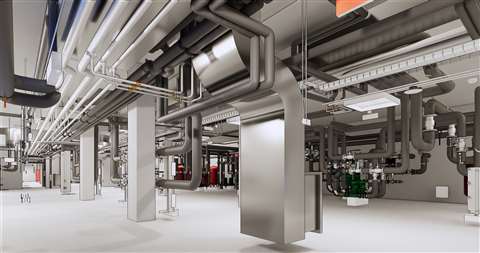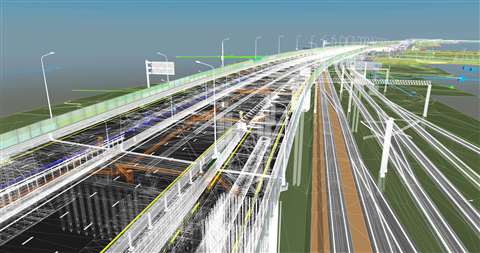How will BIM change the future of construction?
31 August 2022
Research from the Statista Research Department showed 73% of construction industry professionals were using Building Information Modeling (BIM) in 2020, and the numbers had been trending upward for the previous decade.
 Use of BIM has steadily increased over the last decade. (Photo: Adobe Stock)
Use of BIM has steadily increased over the last decade. (Photo: Adobe Stock)
As utilisation of BIM increases, it’s essential for the construction industry to keep up with the latest BIM standards and certifications during the software selection and procurement as it aims to mitigate project risk and to save time and money.
As technology evolves, the industry will have to continue tracking how BIM and its related standards and certifications evolve with it.
To prepare for the future, companies must look ahead on how these standards and certifications are set to shape the industry. With that in mind, here are five considerations for the future of BIM in construction.
Could the digital transformation be increased due to BIM standards?
Digital transformation has been essential for most industries for years. Specifically in E&C, BIM standards and certifications can level the playing field as companies integrate BIM into more activities.
For example, these certifications and standards can ensure software maximises information management efficiency and accuracy, in addition to defining processes to improve the building modeling practice.
What impact will sustainability have on BIM projects?
As government entities around the globe call for climate change response, sustainability mandates at multiple levels of government will continue to be implemented in the future. The Paris Agreement, which has been signed by almost 200 parties worldwide, is an international treaty to help fight climate change to help ensure a more sustainable future.
Around the world, new mandates are being rolled out to make the construction industry more green. The California Energy Commission in the U.S., for example, has adopted a mandate that requires residential homes to be built with solar panel technology.
The mandate went into effect in 2020 and continues to be the current standard. In another example of action by government entities, the city of Copenhagen in Denmark has pledged to become the first carbon neutral capital by 2025.
It is a certainty that additional global sustainability pledges and mandates will be implemented in the future, which will directly impact future building projects. In October 2021, the International Energy Agency released a report to provide a roadmap to G7 Members on how to reduce CO2 emissions from electricity generation.
The report reflects the broader commitments of G7 leaders around goals to reach net zero emissions across their economies in the coming decades. These pledges and mandates may determine what materials should be used for new buildings or what technologies should be incorporated.
Will digital twins and automation continue to shape BIM projects?
When building a physical asset such as a building, parking garage, or airport runway, the development of a digital twin, or a detailed virtual representation of the physical asset, can help anticipate potential flaws in the building design, which can help reduce risks.
 Digital twins can help predict potential flaws in projects. (Photo: Adobe Stock)
Digital twins can help predict potential flaws in projects. (Photo: Adobe Stock)
This digital landscape opens a slew of possibilities to “virtually stress test” a project for potential problems before ground is broken.
Moving forward, the development of digital twins will become more prevalent as companies continue to automate many of their building development processes through consolidated solutions.
This layered approach will not only improve efficiencies in the building process, but it will help provide a more complete and accurate representation of the building information that can be used throughout the life of the asset.
Howw will organisations react to changing BIM standards?
Players in the construction space using BIM tools should work to comply with standards at the international level and not simply to comply with standards at the local level.
Since there are an array of BIM solutions available in the market, selecting one that already complies with multiple standards and has achieved certifications of industry excellence can be advantageous to your business.
One notable global BIM certification is the BSI Kitemark. The certification has been created to “assess the functionality, security, and support of BIM software.” Under this certification, companies can improve BIM management to help de-risk their projects and facilitate the software procurement process, for example.
At the country-wide level, organisations like the National Institute of Building Sciences focus on standards to be followed in the US, and the UK BIM Framework focuses purely on BIM standards to be followed in its member countries.
As the construction industry continues to globalise, it will be essential for businesses to follow BIM standards and certifications at both the global scale and for the business’s home country. For example, the ISO 19650 framework for BIM is recognised as a global standard and can help keep businesses following best practices worldwide.
What role will data play in BIM projects?
 Frank Weiss, Senior Director, New Products, BIM and Innovation, Oracle
Frank Weiss, Senior Director, New Products, BIM and Innovation, Oracle
The digital age continues to produce additional data, and this trend will grow exponentially in the future as Internet of Things (IoT) initiatives continue to be adopted across a range of industries.
To prepare for this endless supply of data, it’s important to harness that data effectively and utilise it more efficiently for BIM projects. As a result, the E&C industry will need to connect to more data sources in the future.
Less traditional construction data from drones and other IoT devices, for example, can all be centralised in a common data environment (CDE) along with the more traditional types of data such as models and specifications that are typically used for BIM projects.
A more comprehensive digital infrastructure to capture and exchange this data will better position construction project teams with what they need to develop a new BIM project more efficiently in the future.



